As we worked our way through lockdown after lockdown during 2020, there was one industry that notably struggled to meet soaring demand, even while the high street stayed shuttered: wine ordering and delivery. Not going out saw wine seekers turning to smaller, online and more specialist local suppliers to keep their glasses full. Zoom tastings and events sprung up weekly. Palates broadened. Were we perhaps starting to drink not only more, but better, thanks to lockdown? As an ardent wine drinker, turned wine student during 2020, I was interested to find out whether lockdown has had a small silver lining for wine consumers and producers, and if any of these changes might be here to stay.
When restrictions first loomed, then lengthened, from March last year, demand and sign up for wine subscription services rocketed to unprecedented levels while wine consumption and purchase shot up, a trend that continued throughout the year. Vivino, the online wine marketplace, noted sales in April, May and June 2020 at around 150% up on the previous year. Meanwhile, the big subscription services such as Virgin and Laithwaite’s saw such a surge in demand that they temporarily stopped taking new orders. With our access to restaurants, pubs and bars denied, and faced with an indefinite number of months inside with only our families for company, it seems millions of us felt having a ready supply of wine to hand was both sensible and essential.
“With our access to restaurants, pubs and bars denied, and faced with an indefinite number of months inside with only our families for company, having a ready supply of wine to hand seemed both sensible and essential.”
On the vital hunt for alternatives, shoppers turned to slightly newer kids on the wine block, such as Naked Wines, to ensure they could keep imbibing. Founded in 2008 as an online wine subscription service with a mission to change the way the wine industry works, Naked gives talented winemakers the support, funding and freedom they need to make quality wines with a conscience. Naked’s customers (called Angels) get access to unique, artisanal wines for less than market price – from off-the-beaten-track vineyards around the world. At the beginning of 2020, the company saw a huge increase in subscriber numbers. “Demand has been nuts since March – and still is!,” says Naked’s growth director Jo Gunn. “Both from our current customers and new customers hoping to try us for the first time.”
Small is beautiful
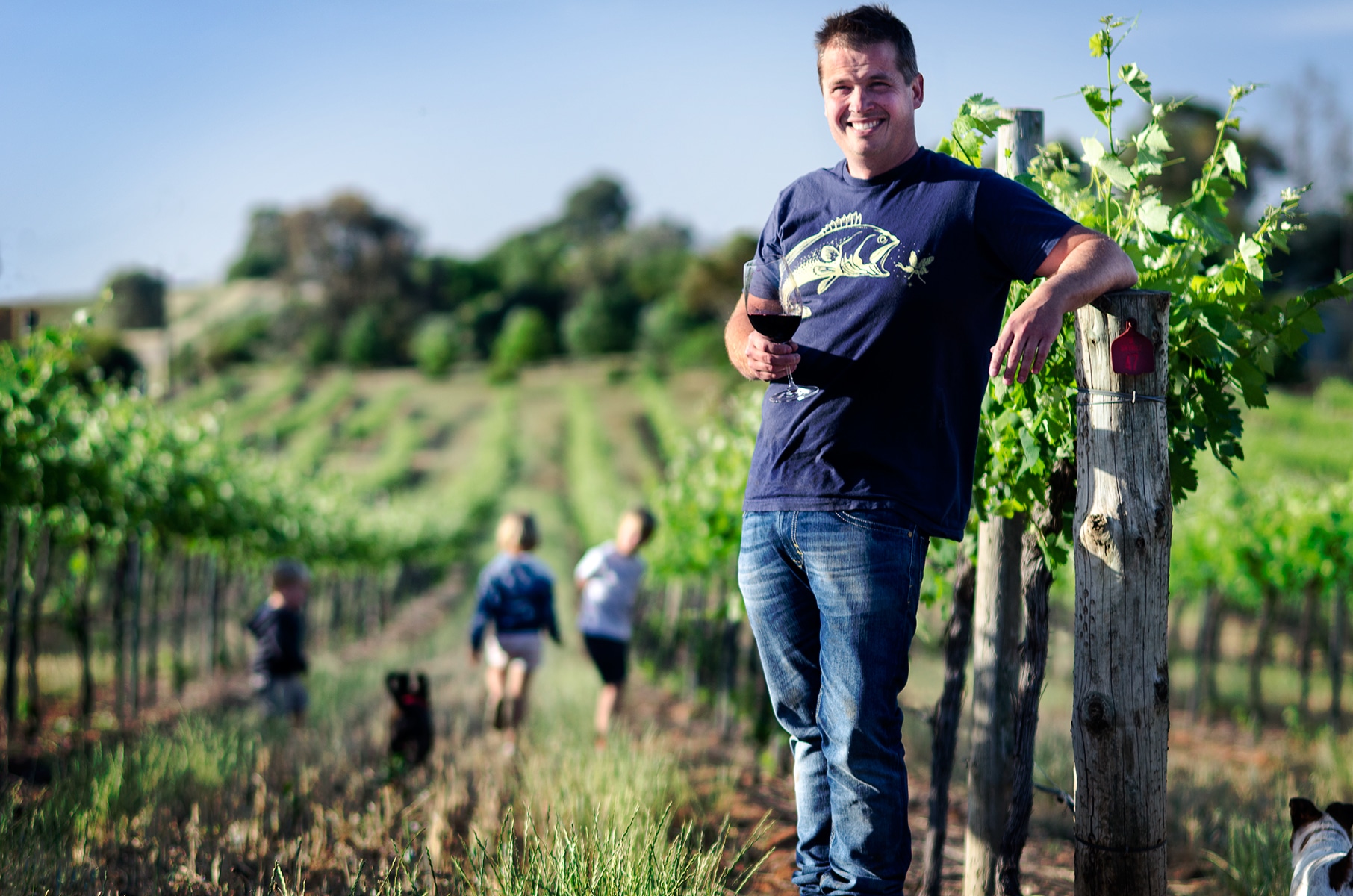 Adam Barton of Clare Valley. Photograph courtesy of Naked Wines.
Adam Barton of Clare Valley. Photograph courtesy of Naked Wines.
So, what’s the benefit to these new subscribers of getting their regular case of wine delivered from smaller, artisanal producers? Jo explains how through the Naked Wines model, “independent winemakers are given the freedom and creativity to express themselves and have enough time and effort to spend on their craft, rather than trying to market or sell their wine.” Meaning winemakers can do what they do best, make great wine – without needing to worry about how it will reach their thirsty consumers – who in turn get to sample something a little out of the ordinary.
There’s plenty of smaller, more local options too – from specialist wine merchants like Ellis Wharton in Cornwall – featuring pre-selected lockdown wine cases to choose from – to London-based natural wine experts like Shop Cuvée or Red Squirrel (importers of ‘native and alternative’ wine), and businesses forced into considering delivery options by the sudden change in circumstances at the beginning of the pandemic. The founders of Oranj wines were all set to open their London wine bar dedicated to low intervention wines at the beginning of 2020. With enforced restrictions, they had to rethink and have reimagined the idea as a delivery service – natural wines from lesser-known producers curated by a different sommelier each month, delivered to your door along with a playlist selected to accompany the wine and an exclusive art print to recreate the holistic experience. In short, if you’re willing to look, there’s a wealth of wine delivery options out there beyond your supermarket favourites.
“Our model means independent winemakers are given the freedom and creativity to express themselves and have enough time and effort to spend on their craft, rather than trying to market or sell their wine.” – Jo Gunn, Naked Wines
And if buyers are open to exploring these new suppliers, they’re open to exploring new wines too. Debbie Warner, sommelier and founder of Cornwall’s Wild Wine Club and Wild Wine School (the latter launched during the pandemic), has noticed a rise in people looking to invest a bit more in themselves and as a result, in the wine they choose. “Although the overall trend we’ve seen is that people are downtrading on what they’re drinking, there’s also those people that want to invest a bit more and know a bit more,” she explains. “So we’re seeing this divide between people buying the big bulk wines, and those who have time to care a bit more – time that maybe they didn’t have previously, maybe learning a bit more, and that can be a bit more considered in their choices.”
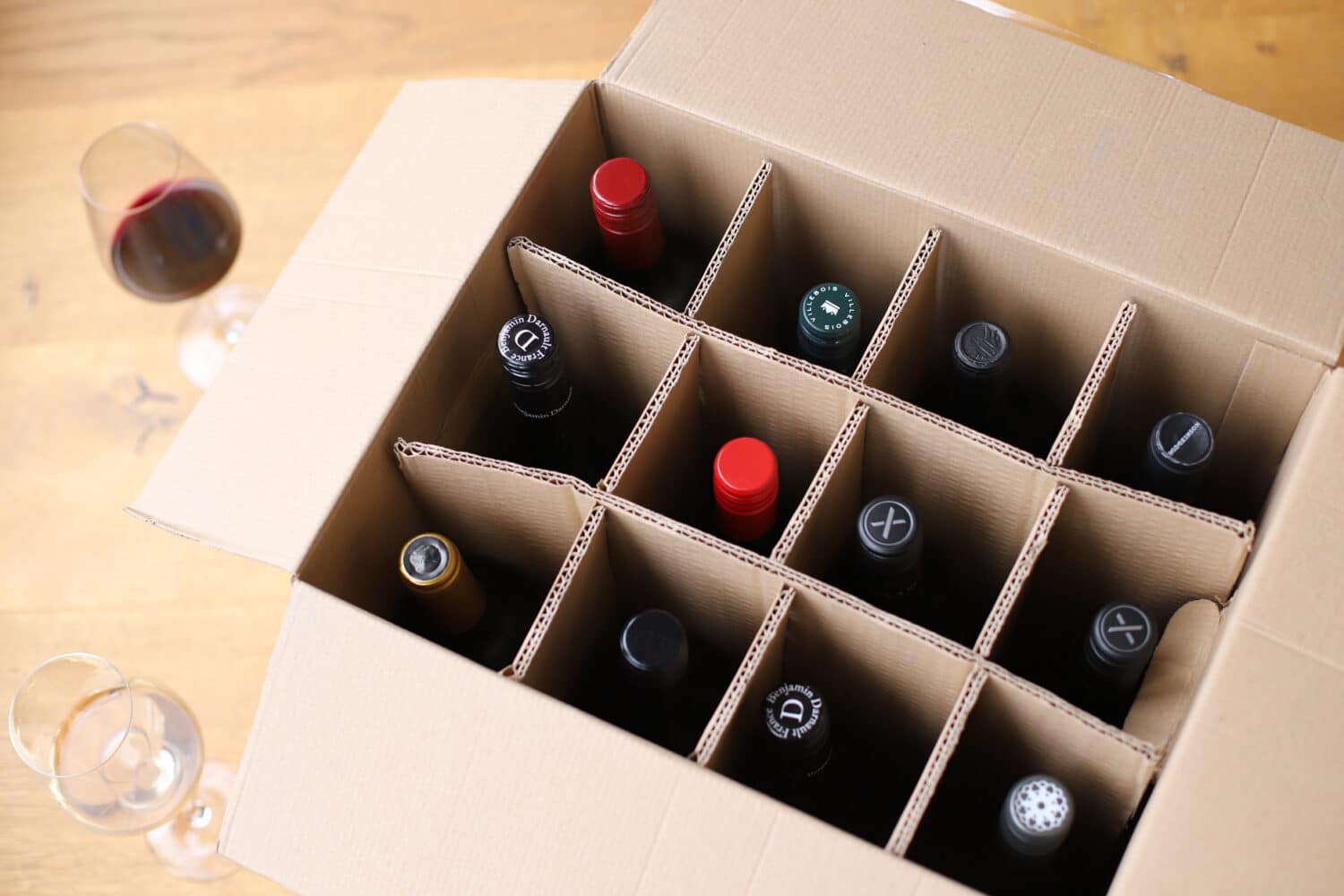 Photograph courtesy of Naked Wines.
Photograph courtesy of Naked Wines.
Jo reinforces this point. For her, one of the unexpected positives of soaring demand, was the opportunity for sippers to explore something new. “Because of the kinds of winemakers Naked supports (smaller, independent chaps who often have smaller vintages/parcels of wine to sell), we weren’t able to simply turn on a tap and organise a huge flow of new wine to suddenly appear on our site. We could only sell what we had (or what we could ship in responsibly during a global pandemic), and people seemed to be very happy to take pre-selected cases rather than choose their own when choice became limited,” she says. “We have seen people checking out with more bottles in their case than average, and also being a little less price sensitive. Perhaps happy to treat themselves to better wine given eating out and other more costly treats have been harder to come by.”
Getting a taste for it
The confidence to invest in something a bit outside your usual bottle comfort-zone, but still a relatively affordable treat, could also be thanks to the fact that online wine tastings have given anyone who wants to learn the opportunity to do so.
Wine is perfect for taking online. The ideal isolation activity: it can be a social and shared experience but you don’t need to be physically together to have a convivial time, plus it’s a great way to marry learning a new skill with a few drinks – online wine tastings have come into their own in the last year, helping even the casual observer feel like a wine buff.
I started my own wine education journey in 2020, and it seemed like I’d stumbled into the perfect storm – everywhere I turned there were online wine tastings, masterclasses and access to bars, winemakers and importers I would never have known about otherwise. Whether you’re looking for wine that’s more sustainable, organic, natural, biodynamic, canned, bagged, bottled, or fizzy – you’ll find an expert willing to share it with you online.
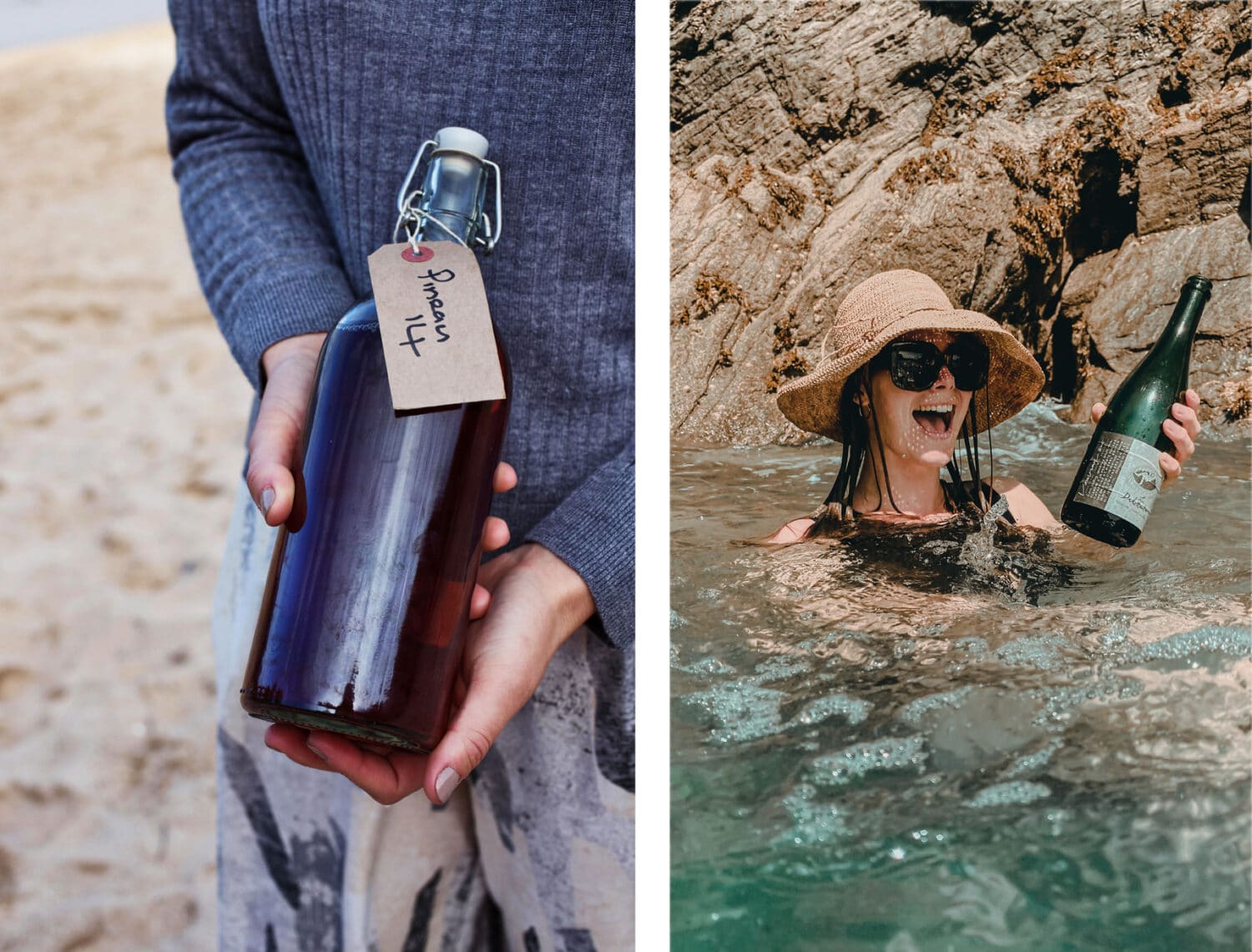
Photographs courtesy of Wild Wine School / Photographers (from left to right): Beth Druce, A. Taylor.
One of the first sessions I took part in was an online introduction to wine with Wild Wine School – a series of weekly Friday afternoon Zoom calls focused on different topics that Debbie felt were important and relevant to wine and people now (now available as part of Wild Wine’s A Modern Introduction to Wine). Featuring tastings, discussions on organic, biodynamic and natural wines, plus chats with wine producers from all around Europe, I heard directly from a champagne producer in France, a winemaker in the Spanish mountains, and about the anforas of English wine producer Tillingham (a clay pot buried underground and used to ferment wine). It was eye-opening.
The thing with wine is, a little knowledge can make a big difference. “With something like wine tasting, with very little in terms of investment of time and knowledge and tasting, you gain so much – and your appreciation is so much better as is your ability to buy better wine,” Debbie says.
Wild Wine School was poised to launch just as lockdown started (the launch party was booked and producers lined up to join) but like many wine producers, educators and venues, as restrictions came into force, Debbie had to think creatively, taking her wine education plans online.
And she has seen the benefit. The range of people able to take classes at Debbie’s school has broadened as a result of going digital. Wild Wine School had upwards of 50 people joining its weekly sessions in the first lockdown, from a wide variety of backgrounds and locations. ‘People of different abilities and different levels of previous knowledge all managed to get something from it,” she explains about the strengths of taking the online approach. “What’s more, people are thinking more and more about the effect on the environment, and while it’s great to visit vineyards – we can do so much from home.”
Naked too saw the opportunity to take the leap into the online world during the pandemic. Its organised sessions called ‘Thirsty Toosdays’ which give members and staff the chance to jump onto a Zoom call with a glass in hand and chat to the winemakers and their in house wine experts. “We were bowled over by the demand for these free informal wine tasting sessions – so much so, they have now become a regular fixture,” says Jo.
Branching out
Online lessons, workshops and gatherings are also a great opportunity for producers to reach new potential customers. As Debbie explains, “the best way that small producers are going to get their wines out there is through linking with other small producers and talking to people through those connections.” Indeed, it could be seen as a positive trend for the industry overall, the increasing connectivity of the wine enthusiasts, experts and producers around the world. According to Naked, this growing virtual network and the confidence of all demographics to engage with video content is a positive effect of the pandemic – bringing more “experience” into the homes of customers and meaning they “meet” the winemakers and access tasting videos and other content on demand.
For Wild Wines, being based in Cornwall can sometimes mean it’s harder to attend the wine industry events that tend to take place in London – but the online approach has levelled that particular playing field, giving everyone access to the same content. “In terms of the trade, globally, it feels like we are more connected,” she continues, “which also means producers all around the world are able to reach a wider consumer base.”
While nothing is a match for strolling through the vines, experiencing wine in the great outdoors with all the sensory cues that go with it, a virtual vineyard is at least a close second.
And, it’s not only Zoom tastings and wine education – it seems the lockdown has proved a bit of a catalyst for the sometimes stuffy old wine world to dust off its social media skills, with brands having to fill the gap left by their lack of physical presence to reach potential new drinkers. Well, maybe not the very stuffy. But the world of trendy wine culture is even more firmly establishing its footing on social channels.
A different flavour
Typically the preserve of a younger generation of producers and importers – often natural, organic or biodynamic – these are brands and importers already familiar with the digital world of social platforms and their power to connect with a captive interested audience. As we increasingly need to shop – and taste – with our eyes thanks to being stuck at home, label design and branding take on an even more important role in the virtual storefront, and one where a bright and disruptive label can make all the difference.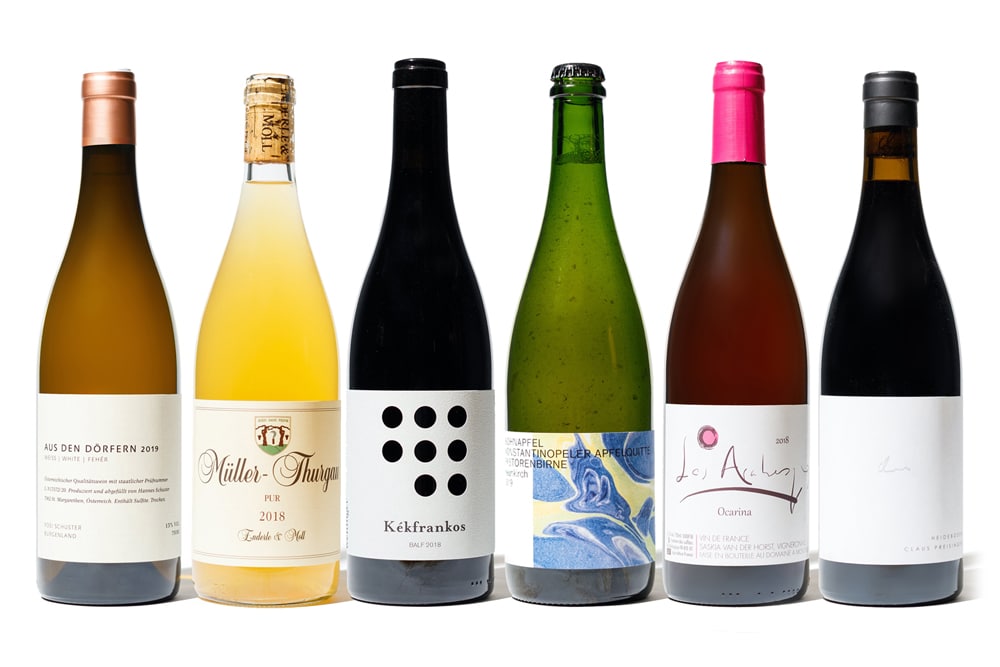
Photograph courtesy of Newcomer Wines / Photographer: Anton Rodriguez.
Many natural wine brands had already started disrupting the industry with labels designed to reflect their younger, less traditional approach to all aspects of the winemaking process. It’s not a huge surprise then to see importers like Wayward and Newcomer wines living up to their names and starting to shake up the way wines are marketed to their consumers, something only accelerated by the pandemic – with a massive growth in content, posts and Instagram Live tastings, tours and featured wines with catchy names and eye-catching design.
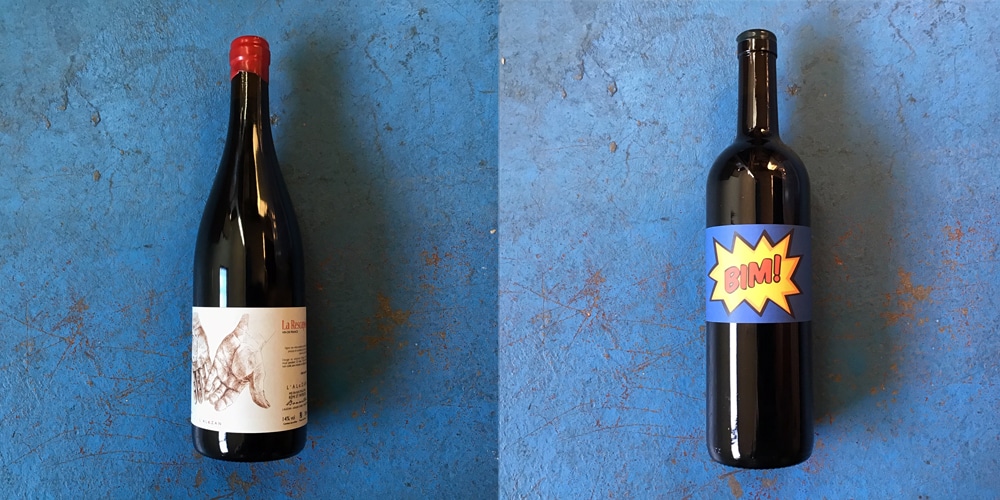
Photographs courtesy of Wayward Wines.
A quick scan of #winedesign reveals some beautiful and bold graphic design, bound to appeal to digitally-savvy wine drinkers, used to having access to and interacting with brands, and always on the hunt for that thumbs-stopping, shareable content. It’s certainly true for winemakers like Tillingham, who’s annual Pet Nat release has been an Instagram favourite – and it’s not hard to see why, with its pinky hue and bold graphic treatment.
 PET NAT 2020 / Photograph courtesy of Tillingham.
PET NAT 2020 / Photograph courtesy of Tillingham.
Staring down the barrel
But of course, it’s not all rosy. The overall impact of the pandemic on hospitality has been – as widely reported – devastating. While enthusiasts like me have been able to get access to smaller producers and winemakers and fill our social media with beautifully branded wine-stagram, this has not been a good year for the wine industry. “It’s been a very tricky year for many winemakers (especially in South Africa where there was a blanket ban on any alcohol sales for a period of time) – and obviously we’re all aware of the challenges faced by our colleagues in the hospitality trade,” Jo explains. “At home drinking has increased, but actually overall alcohol sales are still down.”
And even with the creativity of all those closed bars and restaurants and their online delivery services, it’s hard to see how these models could be a longer term viable alternative for any business operating in the on-trade. The margins on wine direct to consumer simply aren’t sufficient to cover the rents and overheads to keep the restaurants and smaller independents going. Not to mention the fact that it’s well recognised that in times of uncertainty, humans typically turn to the safe and the familiar. As noted in Halstead’s August 2020 Wine Intelligence report, “the majority of consumers are still being much more ‘safe’ with their wine choices – choosing their wine based on what they know rather than trying something new. As a consequence, familiar and known labels are gaining both attention and market share.”
But there are some glimmers of hope for a more interesting and diversified way forward. As we stare down the barrel of many more weeks of restrictions, maybe it’s worth considering where your tipple of choice comes from and switching to support those alternative, local and independent suppliers and producers that need it most. If you do decide to dip your toe in the water of more adventurous wines, get attracted by some more interesting branding, and partake in a Zoom wine tasting or two, I can highly recommend it. As for me, I’m off to sample some sustainable canned wine at an online tasting.
–––
For more information on the brands featured, visit:
Naked Wines: nakedwines.com
Wild Wine School: wildwineschool.co.uk
Wayward Wines: waywardwines.co.uk
Newcomer Wines: newcomerwines.com
Tillingham: tillingham.com
Oranj: oranj.co.uk